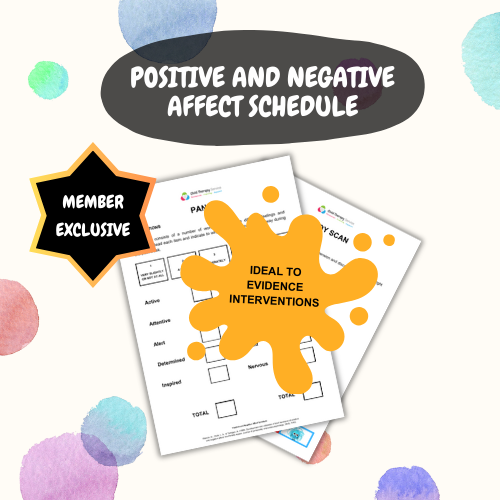Welcome to the Positive and Negative Affect Schedule
The Positive and Negative Affect Schedule (PANAS), developed by David Watson, Lee Anna Clark, and Auke Tellegen in 1988, is a widely utilised tool for measuring emotional states in individuals. It assesses both positive emotions like joy and negative emotions such as fear, providing a quantitative snapshot of emotional well-being. This scale, ranging from 1 to 5, allows practitioners to monitor changes over time, crucial for evaluating intervention effectiveness.
PANAS is particularly beneficial in interventions with children facing social and emotional challenges due to its simplicity and adaptability across developmental stages. It offers structured feedback, aiding in the customisation of strategies to meet specific emotional needs.
It includes a body scan to help the child show where they feel certain emotions as they arise.
Pack information
- Number of Pages: 2
- Font: Ariel
- Format: High quality PDF file
- Video Tutorial: It also includes an instruction guide video
Resource Pack Ideas
- Baseline Assessment: Administer PANAS initially to establish a baseline of the child’s positive and negative affect. This provides a starting point for monitoring changes over time.
- Regular Monitoring: Use PANAS at regular intervals (e.g., weekly, monthly) to track fluctuations in affective states. This helps in assessing the effectiveness of ongoing interventions.
- Target Setting: Set specific goals based on PANAS results. For instance, if negative affect scores are consistently high, interventions can focus on reducing these emotions through targeted strategies.
- Intervention Evaluation: Compare PANAS scores before and after implementing interventions. This evaluation determines whether interventions are achieving desired emotional outcomes.
- Group Interventions: Use PANAS in group settings to assess collective emotional experiences and tailor group interventions to address common affective patterns.
Not sure which intervention would work for the child, this article might be helpful.
Research Link
Members
This is exclusive and FREE TO MEMBERS.
Want to know more about membership benefits? 👉 Click here






Reviews
There are no reviews yet.